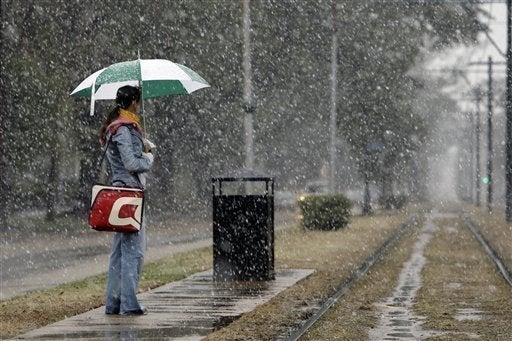
 Ask most people about the benefits of residential renewable energy--geothermal, rooftop solar photovoltaic and solar thermal, and backyard wind turbines, primarily--and the response is usually the same: they are good for the environment, raise property value and lower or eliminate utility bills. While undoubtedly true, these responses present an incomplete picture of the benefits of distributed renewable energy. In certain instances, such as last week when a single ice storm left over 1 million homes and businesses in New England without power, a residential energy system can mean the difference between seeking shelter and being able to shelter others. Other times, particularly during peak demand, renewables stabilize the grid and lower costs for all utility customers.
Ask most people about the benefits of residential renewable energy--geothermal, rooftop solar photovoltaic and solar thermal, and backyard wind turbines, primarily--and the response is usually the same: they are good for the environment, raise property value and lower or eliminate utility bills. While undoubtedly true, these responses present an incomplete picture of the benefits of distributed renewable energy. In certain instances, such as last week when a single ice storm left over 1 million homes and businesses in New England without power, a residential energy system can mean the difference between seeking shelter and being able to shelter others. Other times, particularly during peak demand, renewables stabilize the grid and lower costs for all utility customers.
The Grid Can Fail, and It's Expensive When It Does
America's electricity grid is an engineering marvel, but it is also old, outdated, overstrained and susceptible to failure from storms, terrorism, accidents and high energy demand. And when the grid fails, not only is the loss of power inconvenient, it is also dangerous and costly. For example, the 2003 blackout that stretched from Canada to New York was estimated to have an economic cost of "between $7 and $10 billion. . .due to food spoilage, lost production and overtime wages" as well as the cost of repairing and upgrading the affected parts of the grid. While the 2003 grid failure was one of the most extraordinary outages to hit the United States, smaller scale blackouts, particularly from storms and natural disasters, are rather common.
Advantages of Distributed Energy
Distributed energy has the distinct advantage of functioning regardless of the state of the electrical grid as a whole. What's more, small, residential energy systems actually make the grid more stable by reducing peak demand--the times during which power lines strain to carry enough power to enough homes. Even better, reducing peak demand goes a long way towards reducing electricity prices. In fact, according to the Department of Energy "a 1% reduction in load during high peak periods can reduce wholesale electricity prices by 10%, and a 5% reduction in load can reduce peak prices by as much as 19%." In other words, distributed wind, solar and geothermal can reduce the high demand for energy that often leads to outages and mitigate the impacts of blackouts when they do occur in a way that large scale renewable energy cannot. That is, even massive wind farms in the Midwest and solar concentrating plants in the Southwest are reliant on an energy grid to bring the power from where it is produced to where it is consumed. So while these large scale operations are necessary if we are to tackle rapidly rising greenhouse gas emissions, it is imperative that the true advantages of residential scale, distributed energy be taken into full consideration as well.
Dreaming of Solar Rooftops
The day after last week's ice storm in New England the sky was crisp and clear, and puddles of sunshine flooded rooftops across Providence, Rhode Island. Even though the blackout didn't affect my hometown, I couldn't help but think about the potential for millions of homes and businesses to be soaking up the sun to produce electricity and hot water (that can be used for showering as well as heating a home through radiant floor heating). The reductions in the emissions of greenhouse gases and other pollutants are well documented, as well as the potential cost savings to the owner of a renewable energy system. However, the cost savings to society--in terms of jobs created from installation and manufacturing, stability provided to the grid, and avoided health care costs due to reduced pollution, to name a few--are not. In order to establish proper incentives for these systems, their internalized value must be estimated and built into subsidies.
Financing is Essential
Finally, as I argued last week, new and innovative mechanisms for financing the up-front cost of renewable energy and energy efficiency need to become policy priorities. After all, no matter how much time advocates spend touting the benefits of wind, solar, geothermal, and efficiency, if people can't afford them, the benefits will never fully be realized. Fortunately, companies like Solar City, Sun Run, and Sun Edison, and cities such as Berkeley, San Francisco and Milwaukee, are blazing a path towards making renewables affordable and accessible to all.